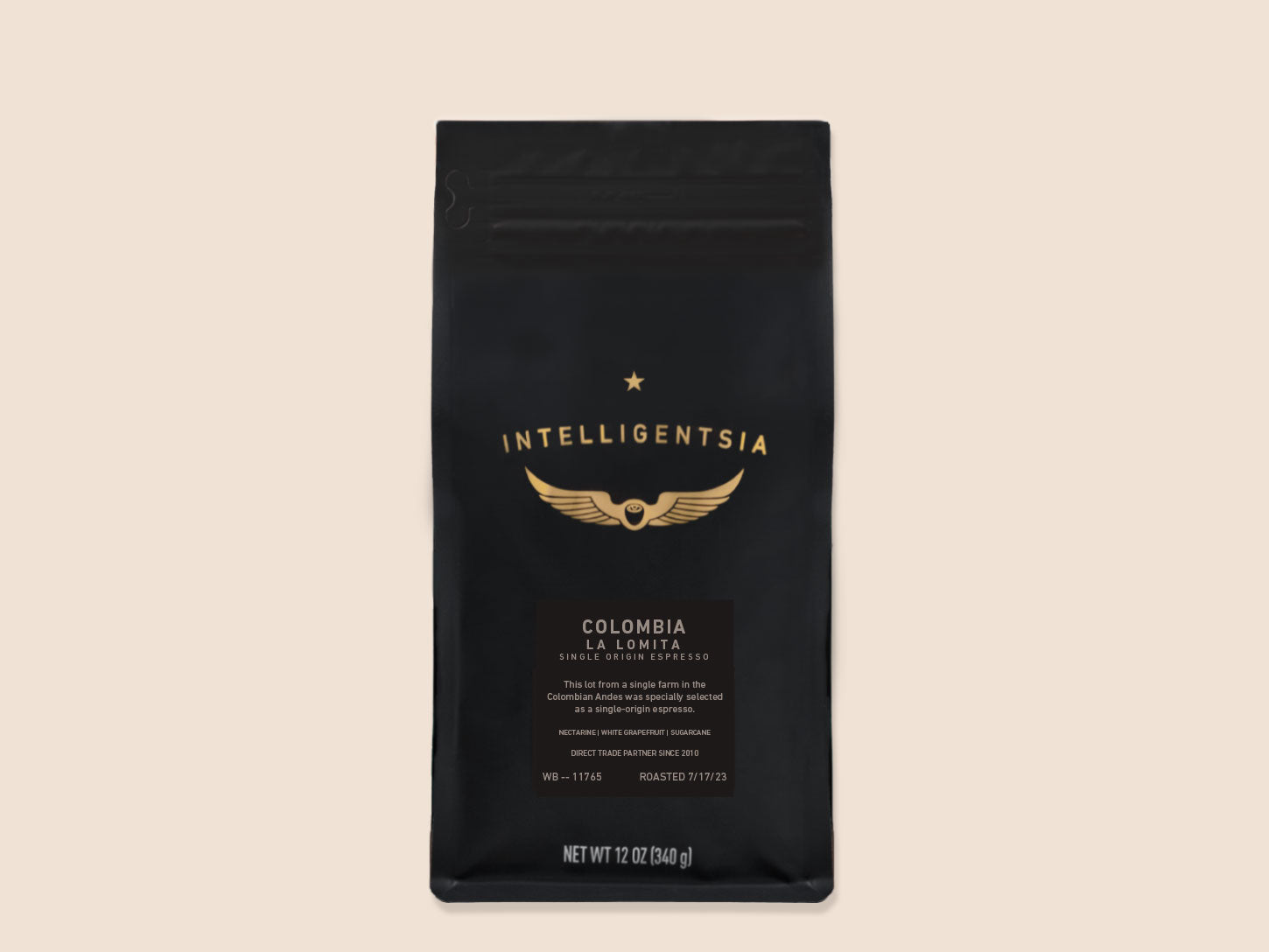Exploring the Origins Behind Top-Tier SOE Single Origin Espresso
Wiki Article
Checking Out the Rich Flavors of Coffee Beans: a Deep Dive Into Espresso and Blended Coffee Beans
When you discover the abundant flavors of coffee beans, you uncover an intricate world where each variety brings its own character to your mug. Understanding the beginnings, refining approaches, and roasting methods can transform your coffee experience. As you browse with the art of coffee and the creative thinking behind mixed coffees, you'll begin to value the nuances that make each sip one-of-a-kind. What you'll find next may change the means you enjoy your early morning brew.The Origins of Coffee Beans: Checking Out Terroir and Flavor Profiles
When you take a sip of coffee, you're not just taking pleasure in a beverage; you're experiencing a rich tapestry of tastes shaped by the beans' origins. Each area produces unique flavor accounts influenced by soil, environment, and elevation. Beans from Ethiopia frequently rupture with intense, fruity notes, while those from Colombia tend to use a well balanced, nutty sweetness.As you explore different beginnings, you'll notice how terroir-- the environmental aspects influencing a crop-- plays an important function - Single Origin Espresso. The very same coffee selection can taste significantly various relying on where it's expanded
When you consider these elements, you begin to appreciate the complexity behind your mug. Each sip narrates of the land and the farmers that supported the beans. So, next time you indulge, consider the journey your coffee took before it reached your hands, and appreciate those detailed tastes that mirror its beginning.
Understanding Espresso: The Art and Science Behind the Brew
When you assume concerning espresso, it's not almost the solid flavor; it's also about the strategies that bring it to life. Recognizing exactly how different prep work approaches effect taste can change your brewing experience. Allow's discover the ins and outs of espresso preparation and reveal the distinct flavor accounts that make each cup special.Espresso Prep Work Techniques
Coffee preparation is both an art and a science, integrating precise strategies with a deep understanding of coffee. To begin, you'll wish to choose high-quality, fresh roasted beans and grind them carefully for optimal extraction (Single Origin Espresso). The work size is important; too rugged, and your espresso will be weak, too great, and it'll be bitterNext, tamp the grounds evenly in the portafilter to ensure consistent extraction. When you secure it into the maker, aim for a developing temperature level between 190 ° F and 205 ° F.As you draw the shot, watch for the best removal time-- around 25-30 secs. The result must be an abundant, creamy espresso with a lovely layer of crema on top. With method, you'll grasp these strategies.
Taste Accounts Discussed
The globe of espresso provides a rich tapestry of flavor accounts that can boost your coffee experience. Light roasts typically showcase bright level of acidity and vibrant flavors, while dark roasts existing much deeper, bolder tones.Understanding these accounts assists you pick the appropriate coffee for your taste. Exploring with various blends can disclose unexpected mixes. A well-crafted mix may harmonize the brilliant notes of an Ethiopian bean with the abundant, chocolatey touches of a Brazilian bean. Welcome the journey of discovering coffee's diverse flavors, and you'll transform your coffee ritual into an exciting journey.
Handling Approaches: How They Influence Flavor and Aroma
While it may seem that the beginning of coffee beans is the most considerable consider establishing their taste and fragrance, the handling techniques utilized post-harvest play an equally important function. You'll find that these approaches can drastically alter the final taste profile of your mug.As an example, the washed procedure removes the fruit from the beans before fermentation, frequently leading to a cleaner, brighter flavor. The all-natural procedure leaves the fruit intact during drying, resulting in a sweeter, fruitier account.
Other methods, like honey handling, strike an equilibrium, allowing some fruit mucilage to remain, giving an one-of-a-kind intricacy.
Each handling method engages with the beans' fundamental features, improving or silencing certain flavors and scents. So, when you drink that espresso or combined coffee, keep in mind that the trip from cherry to cup is affected not just by beginning yet additionally by just how those beans were refined.
Toasting Strategies: Opening the Complete Possible of Coffee Beans
Roasting strategies are essential for exposing the complete potential of coffee beans, as they transform raw, environment-friendly beans right into the aromatic, delicious coffee you appreciate. The selection of roasting approach-- light, medium, or dark-- substantially affects flavor profiles.You can experiment with toasting temperature levels and times to find your ideal brew. A slower roast at lower temperatures enables complicated tastes to develop, while a quicker roast can heighten resentment. Take note of the cracks during roasting; the first fracture shows a light roast, while the 2nd split signals a dark roast. By grasping these strategies, you'll disclose a globe of taste, elevating your coffee experience to new heights. Take pleasure in every sip, recognizing the treatment that went into your mug!
The Magic of Blended Coffee: Creating One-of-a-kind Flavor Experiences
Producing a distinct taste experience with blended coffee can change your early morning routine right into an expedition of taste. By combining different beans from different regions, you can reveal a symphony of flavors that raise your cup to brand-new elevations. Each blend deals a distinctive account, stabilizing sweetness, body, and level of acidity to create something genuinely unique.When you pick a blend, you're not simply choosing a coffee; you're choosing a trip across diverse landscapes and cultures. Try out different mixes allows you to discover your personal faves, whether you enjoy fruity notes or rich, chocolatey undertones.

Sampling Notes: Identifying the Nuances in Your Mug
As you drink your coffee, you could notice a spectrum of flavors dancing on your SOE palate, each exposing the ins and outs of the beans. You might taste the intense level of acidity reminiscent of citrus or the deep, rich notes akin to dark chocolate. The sweetness could stimulate honey or sugar, stabilizing the total account perfectly.Take note of the body of the coffee-- does it really feel ventilated and light, or is it full and velvety? The finish, as well, provides hints; a remaining aftertaste may hint at nuttiness or floral undertones.

Do not fail to remember to explore the special attributes of different origins, as each area gives unique flavors - Single Origin Espresso. For example, Ethiopian coffees commonly present fruity notes, while Colombian beans might display a much more rounded sweetness. By acknowledging these nuances, you'll strengthen your admiration for each and every cup, boosting your coffee experience to new heights

Brewing Techniques: Making The Most Of Flavor Removal for Every Bean
When you discover the various developing methods, you'll uncover that each method can significantly influence the flavor account of your coffee. From French press to pour-over, each method extracts various compounds, improving or muting certain notes. Making use of a French press allows oils to continue to be in the brew, producing a richer preference, while pour-over emphasizes clearness and illumination.Temperature and grind dimension additionally play vital functions. A coarser work works best for cold brews, while a great grind is excellent for espresso. Trying out water temperature level-- between 195 ° F and 205 ° F-- can expose surprise tastes, also.
Don't ignore steeping time; a quick extraction can cause sour notes, while over-extraction might yield resentment. By adjusting these variables, you can maximize flavor extraction and genuinely boost your coffee experience. Enjoy the journey of discovering what technique finest matches your taste!
Frequently Asked Questions
What Is the Ideal Water Temperature for Developing Coffee?
The suitable water temperature level for developing coffee's in between 195 ° F and 205 ° F. If you use water that's too hot, you'll over-extract flavors; too cold, and you won't extract enough. Goal for that wonderful area for the ideal mixture!Just How Does Work Dimension Impact Coffee Flavor?
Grind size significantly impacts coffee flavor. Finer grinds essence much more flavors and oils, resulting in a bolder taste, while coarser grinds yield a lighter taste. Readjusting work dimension assists you attain your desired coffee profile.Are There Wellness Conveniences Linked With Alcohol Consumption Coffee?

What Is the Difference Between Arabica and Robusta Beans?
Arabica beans are smoother and sweeter, typically featuring fruity tastes, while robusta beans are stronger with a bitter preference and higher caffeine web content. You'll observe these differences in aroma and brewing experience.How Can I Shop Coffee Beans for Quality?
To store coffee beans for quality, keep them in an airtight container, far from light, warm, and moisture. If you only grind what you require right before developing., you'll preserve their taste longer.Discovering the Rich Tastes of Coffee Beans: a Deep Dive Into Espresso and Blended Coffee Beans.
When you discover the rich tastes of coffee beans, you uncover an intricate world where each selection brings its own personality to your cup.When you take a sip of coffee, you're not simply appreciating a drink; you're experiencing an abundant tapestry of flavors shaped by the beans' beginnings.Roasting techniques are crucial for exposing the complete potential of coffee beans, as they change raw, green beans into the fragrant, flavorful coffee you appreciate.As you sip your coffee, you may notice a spectrum of tastes dancing on your palate, each exposing the details of the beans.
Report this wiki page